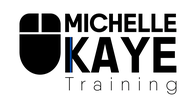Social media is everywhere and used by a lot of people. We need to ensure that it’s available to everyone to be as inclusive as possible. Here are a few tips on how to increase your social media accessibility.
General Social Media Accessibility Tip
Hashtags
Words or phrases that many social media platforms use to search and group topics together all starting with the hash symbol ‘#’.
Capitalise the first letter of each word if your hashtag to make it easier to read, also know as CamelCase.
#LearningIsForEveryone
Ensure all Pictures have Alt Text
There’s a wide range of people who use screen readers to help them access your content. When it gets to an image, make sure that there is something to read out that explains the image.
Use the Alt-Text or sometimes known as a description.
Tips for writing descriptive alt-text:
Convey the content: There’s a huge gap between “Image of a chart,” and something like, “A bar chart illustrates that there has been a year-over-year increase in forest fires, peaking at 100 this year.”
Skip saying “image of” or “photograph of.” The Royal National Institute of Blind People says most screen readers prefer you don’t.
Mention colour if it is important to understanding the image.
Share humour. Descriptive text doesn’t have to be overly formal and should do its best to express what’s funny.
Transcribe text. If the image has copy that is central to its meaning, make sure you include it in the description.
Learn from the best: WebAIM offers tips and several examples, and copywriter Ashley Bischoff’s presentation is very helpful.
Don’t forget GIFs. Twitter recently made alt-text an option for GIFs. If the platform does not support alt-text, include a description in the action.
Inclusive Design for Social Media – HootSuite Blog
Limit emoji and emoticon use
Emojis and emoticons get read aloud by assistive technology. That means people will hear things like “loudly crying face” or “face with closed eyes and stuck out tongue.”
Link shorteners
Link shortening services not only save you characters in your posts, but they help limit the raw characters a screen-reader has to read aloud.
I use Bit.ly for all my tweets.
Make link text descriptive
When you add a link, you may want something different to appear on the screen, instead of the actual link. While this is fine, please don’t use ‘Click Here’.
Let people know what will happen when they click – does it go to another page, another site, download something?
It needs to be clear how this link is different from the others, as some assistive tools can read out just the link text.
Best practice for all links, not only for accessibility.
Tweets
Twitter and Tweetdeck make it easy to add descriptions for the alternative text – Alt-Text.


Take a look at my Accessibility page to see how I’ve implemented some these tips into this site. Follow me on social media to see them in action.
Latest Posts
- Windows 11 Snipping Tool – What’s New?With Windows 10, Microsoft gave us the Snipping Tool and then replaced it with Snip and Sketch. Now Microsoft has returned us back with the Windows 11 Snipping Tool, but with a few changes. In this guide, I’ll walk you through what’s different and how you can put it to use. Getting Started with the… Read more: Windows 11 Snipping Tool – What’s New?
- How to use Windows 11 Layouts to Organise Your ScreenHave you seen the new window layouts in Windows 11? If you’re not sure what I’m talking about, it’s where you can automatically position the different app windows around the screen. You may be wondering how this compares to Windows Snap, which was introduced in 2009. The Basics: Minimise, Maximise, and Restore Let’s start with… Read more: How to use Windows 11 Layouts to Organise Your Screen
- Access Hidden Options in the Windows 11 Right Click MenuIf you’ve been using Windows 11, you’ve probably noticed something different when right-clicking on files and folders – the context menu looks sleeker but seems to be missing many familiar options. Don’t worry; I’ll show you exactly how to find all those “missing” commands under the Windows 11 Right Click. The New Windows 11 Right-Click… Read more: Access Hidden Options in the Windows 11 Right Click Menu
- How to Move Windows 11 Taskbar to the Left: A Simple GuideIf you’re using Windows 11, one of the first differences you’ll notice is that the taskbar options (Start Menu, Search and App icons) are all centred. It’s definitely a bit different from decades of everything being on the left. If this has been bugging you, then I have good news for you! In this guide,… Read more: How to Move Windows 11 Taskbar to the Left: A Simple Guide
- Quick Tips to Identify Windows 10 vs Windows 11One of the questions I’m asked quite frequently is: “Am I running Windows 10 or Windows 11?” If you’re unsure which version of Windows you’re using, I’ll show you several simple tips to help you double-check if you’ve got Windows 10 vs Windows 11. Why This Matters Before we dive in, I should mention that… Read more: Quick Tips to Identify Windows 10 vs Windows 11






